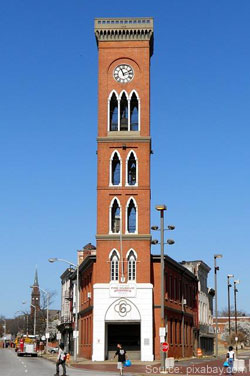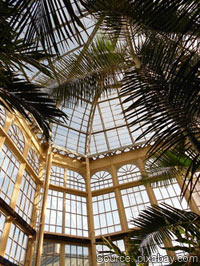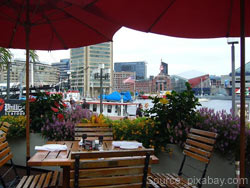 Baltimore is the largest city in the state of Maryland-- home of the Super Bowl XLVII winners the Ravens and a bustling tourist hotspot due to its prime location on the harbor off the Chesapeake Bay. While the city often gets a bad rep due to a high concentration of violent crime and gang activity in many areas, there are certainly parts of the city that are completely safe and sound places to call home or visit.
Baltimore is the largest city in the state of Maryland-- home of the Super Bowl XLVII winners the Ravens and a bustling tourist hotspot due to its prime location on the harbor off the Chesapeake Bay. While the city often gets a bad rep due to a high concentration of violent crime and gang activity in many areas, there are certainly parts of the city that are completely safe and sound places to call home or visit.
If you are considering or planning a move to the city, comprehensive research is required to make sure it is the right place for you. This guide will give you a good start in learning more about Baltimore and what it has to offer.
Baltimore Climate
Baltimore lies in the humid subtropical zone, with moderate weather and four distinct seasons. Winters are cool with light snowfall, and occasional freezing rain and sleet. Autumn and spring are mild, with spring being the wettest season--precipitation falls about 11 days a month in April and May.
Summers are warm but comfortable, with temperatures reaching 90 degrees only about 37 days a year. Due to high humidity in the city, thunderstorms are common in the afternoons.
Baltimore Neighborhoods
The city is comprised of over 225 neighborhoods, but unfortunately, many parts are inundated with violent crime, drugs and poverty. The East Side and the West Side of the city are most known for their dangerous neighborhoods. Some of the areas to avoid in Baltimore are Cedonia, Hartford Road, Johnston Square, the North Avenue and Belair Road corridor, the Orleans Street and Front Street neighborhood, Cherry Hill, Westport, Park Heights, Broadway East, and Harlem Park.
However, there are also parts of the city that are relatively safe with low crime. The Inner Harbor, while mostly a tourist and recreation area, is one of the least dangerous places to be in the city. Some good neighborhoods to call home would be Mount Vernon-- a hip and historic district with just a three percent unemployment rate, beautiful 19th century architecture, shops, museums, parks, and theatres; Fell's Point-- an upscale waterfront neighborhood with a zero percent crime rate, 19th century row houses along tree-lined boulevards, coffee shops, restaurants, and the highest concentration of bars and nightlife in the city; and Federal Hill.
Registering Your Car
 As a new resident of Maryland, you will be required to update your plates and registration within 60 days of relocating. To do so, you can visit any MVA location, with the following documents: proof of ownership of the vehicle (such as your title or previous registration), your application form, proof of insurance (make sure your policy meet's the state's liability requirements) and proof that you passed a Maryland emission inspection.
As a new resident of Maryland, you will be required to update your plates and registration within 60 days of relocating. To do so, you can visit any MVA location, with the following documents: proof of ownership of the vehicle (such as your title or previous registration), your application form, proof of insurance (make sure your policy meet's the state's liability requirements) and proof that you passed a Maryland emission inspection.
Your driver's license must also be transferred within 60 days of your arrival in the state. You will need to pass a vision test if your current license is valid or expired for less than one year. If it has been expired a greater length of time, you will also have to take the knowledge and skills tests.
Baltimore Schools
The public school system in the city is operated by Baltimore City Public Schools. It is the fourth largest district in the state, with 204 facilities educating approximately 84,000 students. The district contains many historic and well-known schools, such as Frederick-Douglass High school, the second-oldest African-American high school in the nation, Baltimore City College, the third-oldest high school in the country, and Western High School, the nation's oldest all-girl school.
The city is also home to several well-known institutions of higher learning, such as University of Baltimore, University of Maryland, and the historically black college Coppin State University. Some notable private colleges include Notre Dame of Maryland University, one of the oldest female colleges in the country, and the Maryland Institute College of Art.
Baltimore Employment
 Once a hub for steel-processing, shipping, auto-manufacturing and transportation, the city went through a deindustrialization that cost workers tens of thousands of jobs. The city has a high unemployment rate--11 percent compared to the nationwide rate of 8.6 percent in 2012. The closure of the steel plant at Sparrow's point is expected to have an even more degenerative impact on the city's economy and unemployment level.
Once a hub for steel-processing, shipping, auto-manufacturing and transportation, the city went through a deindustrialization that cost workers tens of thousands of jobs. The city has a high unemployment rate--11 percent compared to the nationwide rate of 8.6 percent in 2012. The closure of the steel plant at Sparrow's point is expected to have an even more degenerative impact on the city's economy and unemployment level.
About one-fourth of the city's residents are living under the poverty level, with low-wage service work making up a staggering 90 percent of jobs in the city. If you are not already relocating to Baltimore for work, be advised to acquire a job before making the move.
Living Costs in the City
The cost of living in the city is moderate, at about 17 percent greater than the national average overall. Housing costs are about 58 percent greater than the average American city. A standard one-bedroom apartment in Baltimore goes for about $900 a month and a two-bedroom will run you around $1200.
Transportation and utility costs are a bit more reasonable--two percent and three percent above the mean, respectively. Groceries are 12 percent more expensive than the national average, and healthcare costs fall right at the average level for the nation.
Baltimore Transportation
Public transportation in the city is operated by the Maryland Transit Administration and the Charm City Calculator. The MTA controls the expansive transit system that serves the Baltimore-Washington Metropolitan area with 80 bus lines, a light rail, the Metro Subway, and the MARC train, a commuter rail. No matter where you need to go while living in Baltimore, you will find a way to get there promptly and efficiently.
Additionally, the Charm City Calculator is a free public shuttle service that provides transportation to historic sites and points of interest in the city, such as Little Italy, Fell's Point, and Harborplace.
Culture and Contemporary Life
The city's center for leisure is the Inner Harbor, once a run-down port crawling with sailors and riddled with brothels, and now a beautiful tourist attraction boasting plentiful restaurants, stores, and entertainment.
 Harborplace is a waterfront retail and dining plaza, made up of the Pratt and Light Street pavilions and The Gallery--a four-story glass-enclosed upscale mall. Browse regionally-popular products from local merchants such as blue crabs, Ravens and Orioles merchandise, and Edgar Allen Poe memorabilia, or shop at national retailers like Victoria's Secret, Gap, Bebe, Bath & Body Works, and Urban Outfitters. The nearby amphitheater is a great place to catch a live musical performance during warm weather seasons. If you will be moving with children, there are many popular Inner Harbor attractions that kids will love, including the National Aquarium in Baltimore, Port Discovery and the Maryland Science Center.
Harborplace is a waterfront retail and dining plaza, made up of the Pratt and Light Street pavilions and The Gallery--a four-story glass-enclosed upscale mall. Browse regionally-popular products from local merchants such as blue crabs, Ravens and Orioles merchandise, and Edgar Allen Poe memorabilia, or shop at national retailers like Victoria's Secret, Gap, Bebe, Bath & Body Works, and Urban Outfitters. The nearby amphitheater is a great place to catch a live musical performance during warm weather seasons. If you will be moving with children, there are many popular Inner Harbor attractions that kids will love, including the National Aquarium in Baltimore, Port Discovery and the Maryland Science Center.
Cuisine in Baltimore is often centered around seafood due to its location--specifically the regional staple blue crab. The city is full of crab houses and restaurants serving up soft shell crabs, crab cakes, and hard shell crabs cooked in sea salt, Old Bay seasoning and splashed with cold beer before serving. Other food favorites include pit beef--thinly sliced meat barbecued in an open pit and served on a Kaiser roll with white onion and spicy horseradish mayo; Lake trout--breaded and fried Atlantic whiting fish served on a sandwich with ketchup and horseradish sauce; and a "chicken box"--a cardboard carry-out container with four to six wings, seasoned with salt, pepper, and hot sauce, and served with French fries.
Baltimore Relocation Tips
-
Choose a neighborhood carefully. Before choosing a place to buy a home or rent, conduct thorough research on the area. Many neighborhoods in the city have extremely high rates of violent crime, property crime, drug trafficking and gang activity. You should also research the location of any job you are applying for before you accept to ensure that it is not in a dangerous area.
-
Bring a varied wardrobe. The city experiences four distinct seasons, with chilly temperatures in the winter and hot, very humid summers. Pack warm sweaters, coats, scarves, hats and snow boots for the winter months and shorts, sandals and T-shirts for the sticky summers. Be sure to bring an umbrella or raincoat--the city is prone to rain and thunderstorms due to its high humidity.
-
Hook up your water and utilities. The local utility provider in the city is Baltimore Gas and Electric Company, but you can purchase service from another supplier if you choose. Set up a water bill account with the Baltimore City Department of Public Works.